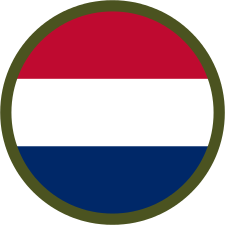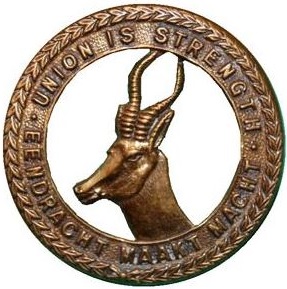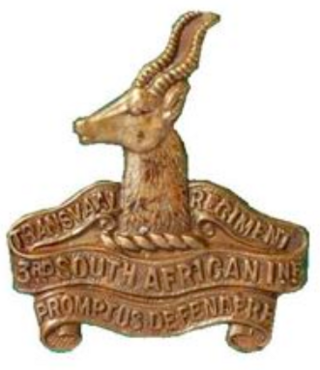The British Expeditionary Force (BEF) was the six divisions the British Army sent to the Western Front during the First World War. Planning for a British Expeditionary Force began with the 1906–1912 Haldane Reforms of the British Army carried out by the Secretary of State for War Richard Haldane following the Second Boer War (1899–1902).

The American Expeditionary Forces (AEF) was a formation of the United States Armed Forces on the Western Front during World War I, composed mostly of units from the U.S. Army. The AEF was established on July 5, 1917, in France under the command of then-Major General John J. Pershing. It fought alongside French Army, British Army, Canadian Army, British Indian Army, New Zealand Army and Australian Army units against the Imperial German Army. A small number of AEF troops also fought alongside Italian Army units in 1918 against the Austro-Hungarian Army. The AEF helped the French Army on the Western Front during the Aisne Offensive in the summer of 1918, and fought its major actions in the Battle of Saint-Mihiel and the Meuse-Argonne Offensive in the latter part of 1918.

The 1st Canadian Division is a joint operational command and control formation based at CFB Kingston, and falls under Canadian Joint Operations Command. It is a high-readiness unit, able to move on very short notice, and is staffed and equipped to meet Canada’s military objectives to counter any potential threat.

The Rifle Brigade (The Prince Consort's Own) was an infantry rifle regiment of the British Army formed in January 1800 as the "Experimental Corps of Riflemen" to provide sharpshooters, scouts, and skirmishers. They were soon renamed the "Rifle Corps". In January 1803, they became an established regular regiment and were titled the 95th Regiment of Foot (Rifles). In 1816, at the end of the Napoleonic Wars, they were again renamed, this time as the "Rifle Brigade".

The Cape Town Highlanders is a reserve mechanised infantry regiment of the South African Army.

The Cameronians (Scottish Rifles) was a rifle regiment of the British Army, the only regiment of rifles amongst the Scottish regiments of infantry. It was formed in 1881 under the Childers Reforms by the amalgamation of the 26th Cameronian Regiment and the 90th Perthshire Light Infantry. In 1968, when reductions were required, the regiment chose to be disbanded rather than amalgamated with another regiment, one of only two infantry regiments in the British Army to do so, with the other being the York and Lancaster Regiment. It can trace its roots to that of the Cameronians, later the 26th of Foot, who were raised in 1689. The 1881 amalgamation coincided with the Cameronian's selection to become the new Scottish Rifles.

The 2nd Infantry Brigade was a regional brigade of the British Army, active since before the First World War. It was the regional formation of the Army in the South East of England–the Brigade commanded and administered soldiers throughout Kent, Surrey and Sussex–but also Brunei. In December 2014 the Brigade merged with 145 (South) Brigade to form Headquarters 11th Infantry Brigade and Headquarters South East.

The Russian Expeditionary Force [REF] was a World War I military force sent to France and Greece by the Russian Empire. In 1915, the French requested that Russian troops be sent to fight alongside their own army on the Western Front. Initially they asked for 300,000 men, an unrealistically high figure, probably based on assumptions about Russia's 'unlimited' reserves. General Mikhail Alekseev, the Imperial Chief of Staff, was opposed to sending any Russian troops, although Nicholas II finally agreed to send a unit of brigade strength. The first Russian brigade finally landed at Marseille in April 1916.

The South African Overseas Expeditionary Force (SAOEF) was a volunteer military organisation in World War I.
The 10th Infantry Brigade was a Regular Army infantry brigade of the British Army formed during the Second Boer War in 5th Division, and during both World Wars the brigade was part of the 4th Infantry Division.

The Wiltshire Regiment was a line infantry regiment of the British Army, formed in 1881 under the Childers Reforms by the amalgamation of the 62nd (Wiltshire) Regiment of Foot and the 99th Duke of Edinburgh's (Lanarkshire) Regiment of Foot.

The Worcestershire Regiment was a line infantry regiment in the British Army, formed in 1881 under the Childers Reforms by the amalgamation of the 29th (Worcestershire) Regiment of Foot and the 36th (Herefordshire) Regiment of Foot. The regiment fought in many conflicts, including both the First and Second World Wars, until 1970, when it was amalgamated with the Sherwood Foresters to form the Worcestershire and Sherwood Foresters Regiment. In September 2007, the regiment amalgamated with the Cheshire Regiment and the Staffordshire Regiment to form the Mercian Regiment.

The Indian Army, also called the British Indian Army, was involved in World War I as part of the British Empire. More than one million Indian troops served overseas, of whom more than 60,000 died during the war.

The North Staffordshire Regiment (Prince of Wales's) was a line infantry regiment of the British Army, which was in existence between 1881 and 1959. The 64th (2nd Staffordshire) Regiment of Foot was created on 21 April 1758 from the 2nd Battalion of the 11th Regiment of Foot. In 1881, under the Childers Reforms, the 64th Regiment of Foot was merged with the 98th (Prince of Wales's) Regiment of Foot (originally raised in 1824) to form the Prince of Wales's (North Staffordshire Regiment). In 1921 the regimental title was altered to the North Staffordshire Regiment (Prince of Wales's).
The 27th Battalion, CEF was an infantry battalion of the Canadian Expeditionary Force during the First World War. The battalion was authorized on 7 November 1914 and embarked for Great Britain on 17 May 1915. It disembarked in France on 18 September 1915, where it fought as part of the 6th Infantry Brigade, 2nd Canadian Division in France and Flanders until the end of the war. The battalion was disbanded on 15 September 1920.

The 4th Canadian Infantry Brigade was an infantry brigade of the Canadian Army active during World War I and World War II. Raised in 1915, the brigade formed part of the 2nd Canadian Division and fought on the Western Front between 1916 and 1918. The brigade was re-raised in 1939 for service during World War II and subsequently took part in actions at Dieppe in 1942 and then in north-west Europe during 1944 and 1945.

The South African 1st Infantry Brigade was an infantry brigade of the army of the Union of South Africa during World Wars I and II. During World War I, the brigade served as a British formation in Egypt and on the Western Front, most famously the Battle of Delville Wood. It was reactivated at the start of the Second World War as a South African formation and served in East Africa and the Western Desert; the brigade disbanded on 1 January 1943.
The 197th Brigade was an infantry brigade formation of the British Army that saw distinguished active service in both the First and Second world wars.

1st SA Infantry Regiment was an infantry regiment of the South African Army, during World War I.

The 3rd South African Infantry Regiment was an infantry regiment of the South African Overseas Expeditionary Force during the First World War.

















